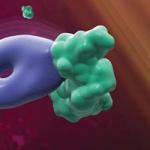
Research Topics
Our ultimate goal is to understand the role that the G protein, Gsα, plays in the development of obesity in children with PHP1a and more generally the role of Gsα and other G proteins in the regulation of energy balance and glucose metabolism. With this insight, we can potentially design therapeutic targets for obesity and diabetes.
Current Research
Our laboratory studies the genetic regulation, biochemistry, and physiological roles of the heterotrimeric G protein Gs, which is required for hormone-stimulated intracellular cAMP accumulation and other G proteins, with a particular focus on the role of these G proteins in regulation of energy and glucose homeostasis. Using the human genetic model Albright hereditary osteodystrophy (AHO), which is associated with heterozygous inactivating mutations in the Gsα-subunit gene (GNAS), and a mouse model with heterozygous inactivation of Gnas, we have demonstrated that Gsα is imprinted in a tissue-specific manner with the paternal allele poorly expressed in some tissues. This most likely explains why maternal transmission of AHO leads to multihormone resistance and obesity (pseudohypoparathyroidism type 1a, PHP1a) while paternal transmission does not (pseudopseudohypoparathyroidism, PPHP). We have identified an imprint control region for Gsα and have shown that imprinting (methylation) of this region is abnormally imprinted in pseudohypoparathyroidism type 1b, an isolated form of hormone resistance. We showed that maternal Gsα mutations also lead to obesity and insulin-resistant diabetes in mice and that this parent-of-origin effect of Gsα mutations on energy balance and glucose metabolism is due to Gsα imprinting within the central nervous system. We have recently shown that Gsα imprinting in the dorsomedial hypothalamus (DMH) underlies the parent-of-origin metabolic effects of Gnas mutations. In addition we have shown that melanocortins appear to mediate their effects on food intake in the paraventricular nucleus (PVN) via signaling through Gq/11α . We are also conducting detailed metabolic studies in PHP1a and related patients in the Clinical Center’s Metabolic Unit.
Applying our Research
Understanding the mechanisms by which energy balance and glucose metabolism are regulated by the central nervous system is fundamental in helping design future medications for the treatment of obesity and diabetes, two conditions with very significant morbidity and mortality rates and with an ever-increasing prevalence in the general population.
Need for Further Study
We need to understand in which areas of the brain Gsα is affected by genomic imprinting and how Gsα deficiency in these regions leads to such profound metabolic effects.
Biography
- American Association of Physicians, 2018
- American Society for Clinical Investigation, 2001
- Endocrinology and Metabolism Fellowship, Interinstitute Endocrinology Training Program, NIDDK, NIH, 1986-1989
- Internal Medicine Residency, Montefiore Medical Center, Bronx, NY, 1983-1986
- M.D., Columbia University College of Physicians and Surgeons, 1983
- B.S., Massachusetts Institutes of Technology, 1979
Selected Publications
- Wilson EA, Sun H, Cui Z, Jahnke MT, Pandey M, Metzger P, Gavrilova O, Chen M, Weinstein LS. Gqα/G11α deficiency in dorsomedial hypothalamus leads to obesity resulting from decreased energy expenditure and impaired sympathetic nerve activity. Am J Physiol Endocrinol Metab. 2021;320(2):E270-E280.
- Chen M, Shrestha YB, Podyma B, Cui Z, Naglieri B, Sun H, Ho T, Wilson EA, Li YQ, Gavrilova O, Weinstein LS. Gsα deficiency in the dorsomedial hypothalamus underlies obesity associated with Gsα mutations. J Clin Invest. 2017;127(2):500-510.
- Li YQ, Shrestha Y, Pandey M, Chen M, Kablan A, Gavrilova O, Offermanns S, Weinstein LS. G(q/11)α and G(s)α mediate distinct physiological responses to central melanocortins. J Clin Invest. 2016;126(1):40-9.
- Li YQ, Shrestha YB, Chen M, Chanturiya T, Gavrilova O, Weinstein LS. Gsα deficiency in adipose tissue improves glucose metabolism and insulin sensitivity without an effect on body weight. Proc Natl Acad Sci U S A. 2016;113(2):446-51.
- Mandl A, Burbelo PD, Di Pasquale G, Tay YS, Welch J, Lionakis MS, Rosenzweig SD, Waldman MA, Warner BM, Walitt B, Collins MT, Balow JE, Chiorini JA, Simonds WF, Agarwal SK, Blau JE, Weinstein LS. Parathyroid Hormone Resistance and Autoantibodies to the PTH1 Receptor. N Engl J Med. 2021;385(21):1974-1980.
Related Scientific Focus Areas



Molecular Biology and Biochemistry
View additional Principal Investigators in Molecular Biology and Biochemistry


This page was last updated on Thursday, August 7, 2025